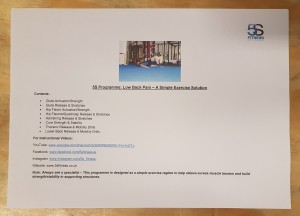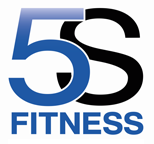 Low back pain is pain, muscle tension, or stiffness localized below the costal margin (bottom of your ribs) and above the inferior gluteal folds (bottom of your buttocks), with or without sciatica, and is defined as chronic when it persists for 12 weeks or more.
Low back pain is pain, muscle tension, or stiffness localized below the costal margin (bottom of your ribs) and above the inferior gluteal folds (bottom of your buttocks), with or without sciatica, and is defined as chronic when it persists for 12 weeks or more.
Note, the programme I have designed is for those suffering with what is often referred to as “non-specific low back pain”.
Non-specific (or Simple or Mechanical) low back pain is the general term that refers to any type of back pain in the lumbar region that is not related to serious pathology and/or does not have a specific cause. Non-specific low back pain is usually categorized in 3 subtypes: acute, sub-acute and chronic low back pain.
Always see a medical specialist if you are suffering with back pain, even if its just to rule out any underlying issues.
Specialists will be able to make a detailed assessment on the best treatment plan for the type of pain you are experiencing. For example, if you have an exaggerated anterior tilt of your pelvis and back pain that is exacerbated by extension of your spine. A treatment plan might be to strengthen the muscles that bring your pelvis back to a more neutral position (abdominals/glutes/hamstrings), and stretch the muscles which pull you into an anterior tilt (hip flexors).
However, once any potentially sinister issues have been ruled out, and a diagnosis is something along the lines of “wear and tear – poor posture – too much sitting – weak / tense muscles” etc. It is in your best interest to take an educated approach to how you can increase physical activity with exercises that are specifically designed to keep your low back in good health.
Incorporating 3 or more of these activation/strength and mobility exercises daily (or as often as you can), will help to build strength in supporting structures and relieve excessive muscle tension, ultimately helping to relieve low back pain.
Don’t be afraid to take a holistic approach, a particular exercise might not be of much use for you as it may be for someone else. However, activity as a whole is key, and increasing activity with any of the drills in this programme is a step in the right direction – eventually you will develop a routine of exercises which will help to relieve your pain/discomfort.
If you want a copy of the programme (21 page document), send me an email to: info@5sfitness.co.uk or send me a message on any of my social media pages (linked below).
Thanks for reading
Jay
Follow us on:
Facebook: www.facebook.com/5sfitnessuk
Twitter: www.twitter.com/5sfitness
Instagram: www.instagram.com/5s_fitness
YouTube: www.youtube.com/channel/UC66XVf9NZBO8j-V4or5d2Tg
